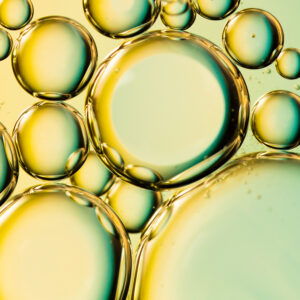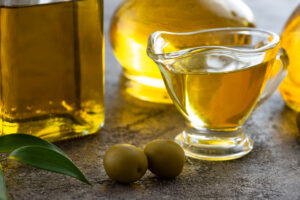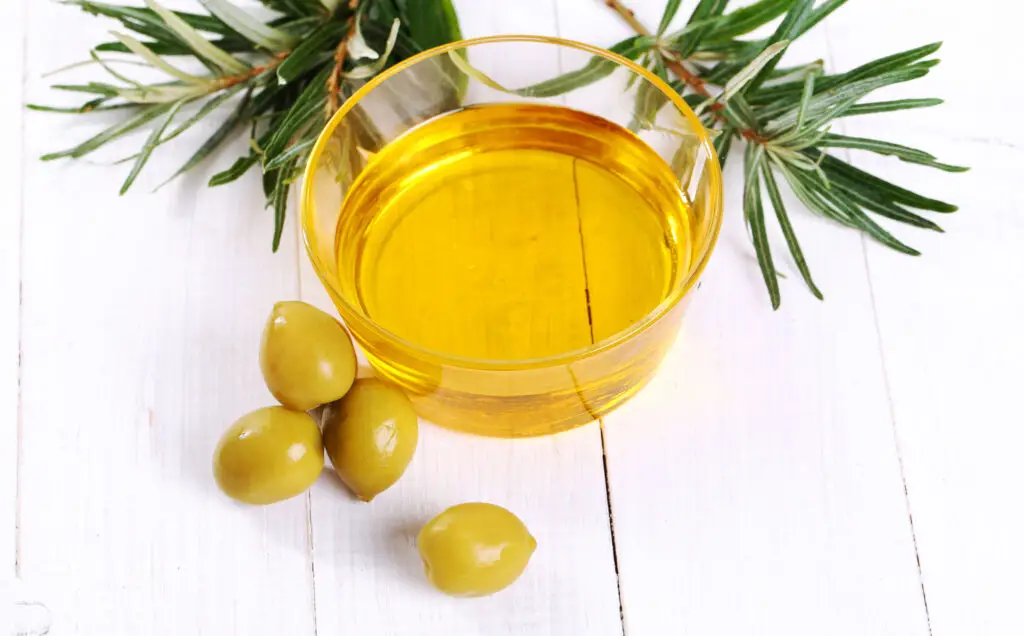This post contains affiliate links. When you buy through our links, we may earn a commission.
The smell, appearance, and taste of cooking oil say a lot about its quality. Learn more about the uses of cooking oil and when it should be discarded in our article below.
Whether you’re deep-frying, sautéing, or just using it to stir-fry vegetables, you want your cooking oil to taste delicious and make your food flavorful and crispy.
However, what happens when the oil becomes rancid and how do you know when cooking oil is bad?
In this article, we’ll answer all these questions and more so that you know how to tell when cooking oil has gone bad and should be thrown out. Have a look below to learn about the good and bad of used vegetable oil.
Signs of spoilage

Used cooking oil becomes rancid if left in a hot environment (like a garage, pantry, or kitchen cupboards) over time. Rancid cooking oil has an unpleasant odor and will make your food taste bitter.
While you can store good oils at room temperature, rancid oils must be kept refrigerated to preserve them. If not kept in a cool place, the oil may not be safe to use. If your oil smells stale or there’s residue inside your container, throw it out.
The bottom line is that, yes, it’s possible for cooking oil to go bad and become dangerous. However, with that said, don’t freak out too much.
Suppose you’re using fresh oil from a reputable source and storing it properly. In that case, you can continue using it to prepare your mouth-watering meals.
If you think your oil has gone bad, discard it. It’s best to err on caution when it comes to your health! So, toss anything that looks spoiled or rancid and replace it with new oil. Also, remember to keep an eye on how old your cooking oil is before each use.
Expired vegetable oil
Technically, vegetable oil can last a very long time. However, it won’t taste or smell fresh anymore and will probably leave your food looking greasy and soggy. You can usually tell that vegetable oil has gone bad by its smell or taste, which is a giveaway.
When exposed to oxygen, vegetable oil slowly turns rancid and starts to smell stale. If expired vegetable oil makes any of these smells worse after heating, toss it out. Otherwise, you can use it for less delicate dishes like salads or soups, although it’s not recommended.
What does rancid cooking oil look like? A classic sign of expired vegetable oil is seeing tiny black specks floating in it.
They are food particles that were once submerged but have now floated to the top due to oxidation. Expired vegetable oils also have a distinct smell that s kind of grassy/musty and garlic-like.
Vegetable Oil Shelf Life and Expiration Summary

Wondering how long vegetable oil will last? Although some types of oils are recommended for refrigeration, others survive at room temperature if unused.
Exposure to light and heat can make vegetable oil go rancid quickly. Therefore, storing the oil in a cool, dark place is recommended.
You should never freeze vegetable oil because it can cause changes in texture that may not be reversible after thawing. So, how long does vegetable oil last? Most unopened bottles of vegetable oil have an indefinite shelf life, which means they can sit on your pantry shelf forever and remain safe to use.
As long as there are no signs of mold or mildew, open bottles of vegetable oil should also last indefinitely.
So how do you know when your bottle of vegetable oil goes bad? Have a look at the information below to find out.
Here Are Some Signs of Bad Cooking Oil
The smell of bad cooking oil can be overpowering, while it’s more subtle at other times. It isn’t good if your oil smells like a paint thinner or nail polish remover.
If your cooking oil has a rancid or bitter smell to it, that’s another good indicator that something isn’t right. Remember that used vegetable oil is prone to pick up odors from its surroundings.
Some signs of bad cooking oil include:
- Rancid smell/flavor – When vegetable oil has gone rancid, it will have an unpleasant smell or taste. If your oil smells or tastes bad, or if you notice anything unusual about its appearance, then it’s time to toss it.
- Cloudy appearance – Expiration dates are important for two reasons. One, they let us know how long we can safely store something; and two, they help us identify spoiled foods before we eat them and get sick. A Cloudy appearance indicates expired cooking oil, so check the date before use.
- Another sign of bad cooking oil is its color. Rancid oils will have turned dark brown or black. If you think your cooking oil might be spoiled, it is best to dispose of it and get a new bottle!
- The longer cooking oil sits in storage, the faster it goes rancid. It means oils should always be stored in airtight containers at room temperature and away from heat sources like hot stove burners.

Frequently Asked Questions (FAQ)
What happens when cooking oil goes bad?
Unfortunately, the oil will go bad over time. It can occur when oil has been left unrefrigerated for too long, or it can happen naturally after a specific time. When cooking oil becomes rancid, it no longer smells pleasant and gives off an unpleasant odor. If you open a container of spoiled cooking oil, you'll see its appearance is murky. When oils start turning bad, they break down, creating organic compounds like ketones as well as oxidation products such as aldehydes. Both compounds have different aromas. Ketones smell rancid, while aldehydes have a very distinct burning rubber smell.
How do you know if cooking oil is good?
Why is it important to check if your cooking oil is good, and how do you know if it is good in general? Cooking oil generally consists of about 80% triglycerides, a group of three fatty acids bonded together by an ester bond. As time passes and during exposure to heat from heating or frying, these bonds can break down, resulting in deterioration of flavor, color, and odor. Ultimately, once oils have been degraded past a certain point, you should stop using them for cooking as you might risk consuming unhealthy oxidized fats. So how do you know if cooking oil is good? Changes in appearance, smell; and taste is the best ways to determine if cooking oil is good.
What does rancid cooking oil look like?
The easiest way to detect rancid oil is by its smell. If it smells funny or off, then chances are it's distasteful. If your nose isn't sensitive enough to identify an off odor, try tasting a bit of cooking oil before and after use. If it tastes bitter after cooking, dispose of that batch. Remember, tossing out rancid oils will prevent flavor contamination.
Can cooking oil go bad and make you sick?
Yes, just because you haven’t seen any visible signs of spoilage doesn’t mean that it isn’t bad for you. Some oils go rancid so slowly that they aren't always noticeable. Over time, cooking oil becomes oxidized and saturated with impurities like metals and bacteria. Cooking oil can go bad and make you sick as a result. However, if consumed in small amounts, it won't necessarily cause immediate symptoms.
Conclusion
The best way to know if cooking oil has gone bad or gone rancid is its smell or taste. Rancid oil has a noticeably unpleasant odor. Dark spots on your cooking oil are also indicators that your oil has gone bad and should be thrown out immediately.
If it smells bad and looks suspicious, there’s a good chance it’s spoiled.
Using rancid cooking oil can make you sick and drastically change your food taste. To avoid this, implement our storage tips mentioned above and look out for the tell-tale signs of rancid cooking oil.
Food oil photo created by fabrikasimf – www.freepik.com
Olive oil photo created by Racool_studio – www.freepik.com
